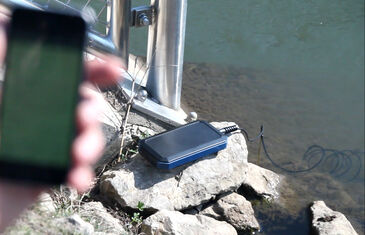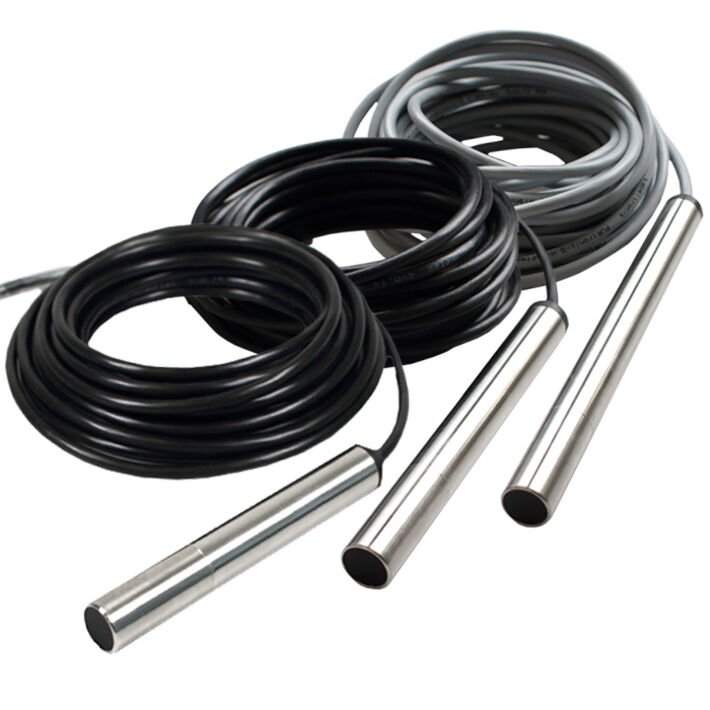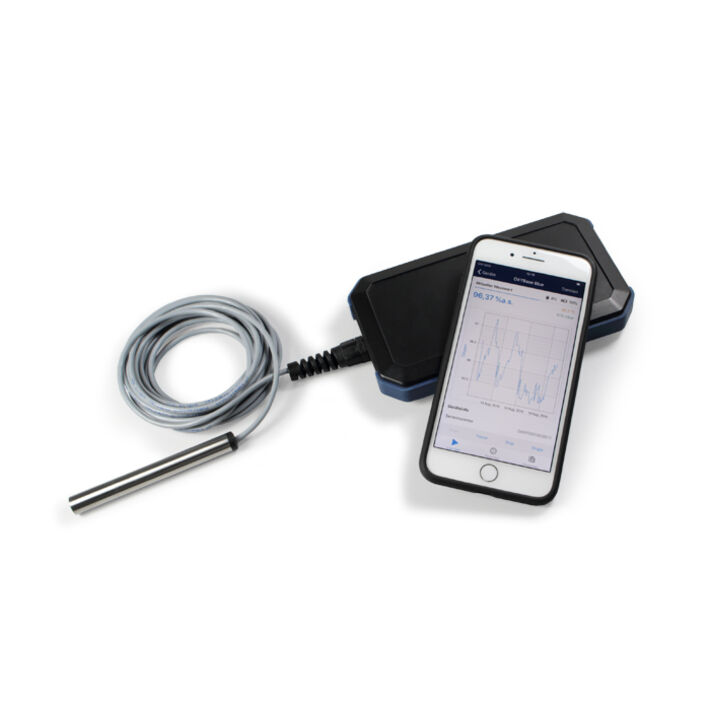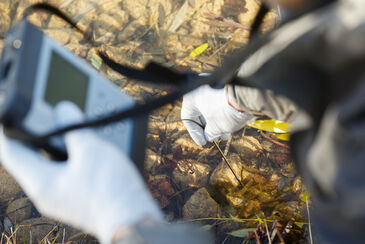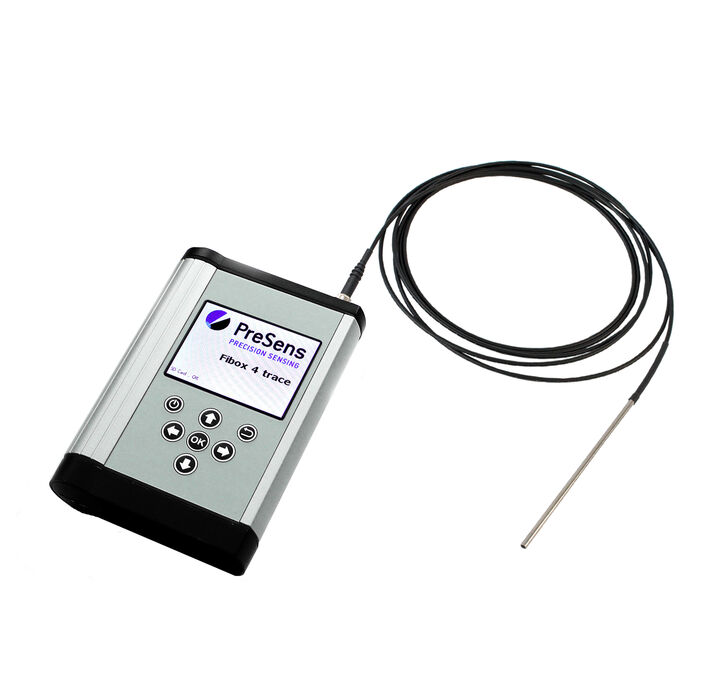Watch tutorials, webinars and informative videos about PreSens optical sensor systems.
Dissolved Oxygen (DO) Measurement
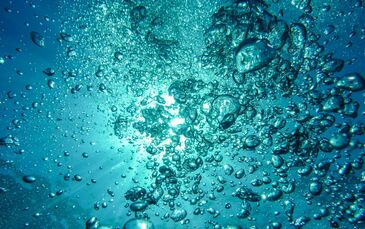
Dissolved oxygen or DO is the amount of free oxygen molecules (O2) dissolved in water or other aqueous solutions. It does not refer to the oxygen bound in water molecules (H2O) or to other elements. As the solubility of oxygen in water is relatively low DO is essential for the survival of many aquatic organisms and therefore an important parameter in e.g. water quality assessments, aquaculture and wastewater treatment as well as in cultivation of microorganisms, in pharmaceutical and food applications.
How does O2 get dissolved in water?
Oxygen enters the water from the atmosphere by diffusion or through mixing. Fast moving waters, like streams, have a higher amount of dissolved oxygen compared to stagnant bodies of water, like ponds or lakes. Furthermore, oxygen is also produced in photosynthesis by aquatic plants, phytoplankton, and algae.
How do temperature, pressure and salinity influence DO?
Depending on temperature, pressure, and salinity the amount of dissolved oxygen in an aqueous solution will vary.
The solubility of oxygen in water is temperature dependent. With increasing temperature, the solubility of oxygen in water decreases. This can be described using the Bunsen absorption coefficient α(θ) and the oxygen partial pressure p(O2):
cS(p,θ) = [p(O2) - pW(T) / pN] α(θ)
For a table of oxygen solubility in air-saturated fresh water click here.
Pressure also influences the amount of dissolved oxygen water can hold. With increasing atmospheric pressure, the amount of dissolved oxygen increases. As pressure decreases with higher altitude, water at lower altitudes can hold more dissolved oxygen than water at higher altitudes.
Third, the solubility of oxygen in water is dependent on salinity, while the partial pressure and the % saturation of oxygen is not affected by changes in salinity. Increasing the salt concentration leads to a decrease in oxygen solubility. This means that in absolute concentration a seawater sample will contain less oxygen than a freshwater sample at the same temperature and pressure although the partial pressure is the same. (Seawater has a typical salinity of 0.35 % (35g / 1000g)).
There are different methods to determine the dissolved oxygen content in water:
The traditional method is titration (Winkler method). The sample is fixed with reagents, so the oxygen level does not change before it is titrated. This method is considered very accurate, but it is very time-consuming and not easy to carry out in the field.
Another old method is the use of electrochemical (Clark-type) DO sensors. These sensors are attached to a meter or data logger and often arranged in a sensor array to measure multiple parameters. In electrochemical sensors oxygen permeates through a membrane and is reduced at the cathode. This generates a current, that can be translated into the oxygen concentration. Electrochemical probes need frequent maintenance, for membrane or electrolyte change, and recalibration. Furthermore, some of these probes need warm-up time and it is necessary to stir the sample of accurate readings. Also, oxygen is consumed during the measurement process, which can cause problems at low oxygen concentrations and in small sample volumes.
Optical DO sensors use a fluorescent dye which is sensitive to oxygen. They have replaced the electrochemical sensors in applications where accuracy and stability are key. Depending on the amount of oxygen present in the sample the fluorescence response of the sensor changes and can be translated into the oxygen concentration. Oxygen is not consumed during the measurement process. Optical oxygen sensors have a very high calibration stability and need very low maintenance compared to electrochemical probes, which makes them ideal for long-term monitoring. Even though the fluorescent dye degrades over time, and the sensing element needs to be replaced after a certain time, maintenance is far less frequent than in electrochemical probes.
PreSens offers different optical sensor solutions for DO measurement. Have a look at our set-ups!
OXYBase®
The OXYBase® series oxygen probes are ideally suited for DO monitoring out in the field, e.g. in aquaculture, water quality assessments or wastewater treatment. The probes are designed for long-term deployment on site.
The OXYBase® series probes have a measurement range of 0 - 100 % O2 and can directly be connected to a control unit. The probes are waterproof and can be submerged completely. They are available with stainless steel housing so they can stand long-term use in seawater. The probes' optical sensor is integrated in a removable sensor cap and can easily be exchanged. OXYBase® use with either RS232 or RS485 as digital interface, and furthermore versions with one analog 4 - 20 mA output or two 4 - 20 mA current source outputs for O2 and temperature are available. Read more!
The most flexible OXYBase® version is the OXYBase® WR-Blue. It is a battery-powered, wireless oxygen measurement system you control with your smartphone or tablet (Android or iOS app). It consists of a robust wide range OXYBase® probe (max. 0 - 100 % O2, limit of detection 0.03 % O2) with integrated temperature sensor and stainless-steel housing, which is connected to a Bluetooth module. The Bluetooth module together with a data logger, and pressure sensor - for automatic compensation of the oxygen measurements - are integrated in a lightweight water jet protected housing (IP65). The device is controlled wirelessly via smartphone and the PreSens Wireless Studio app. The software allows changing measurement settings, controlling the measurements or calibrating the sensor, and offers additional features like salinity compensation. The graphical display of the ongoing measurement offers quick assessment of oxygen levels. Stored measurement data can be downloaded from the device to the smartphone and exported for further analysis. Read more!
Fibox 4 (trace) & Oxygen Dipping Probe
For water sample analysis or research applications the precise Fibox 4 or Fibox 4 trace oxygen meters together with slender optical dipping probes are the solution. The portable oxygen meters are designed for easy handheld use. Their robust housing is splash-proof, and the controls were developed to be operated even while working under harsh conditions with heavy gloves on. The oxygen meters allow temperature compensation so precise measurements at changing temperatures can be conducted. Additionally, they have automatic compensation for pressure and salinity. Fibox 4 can be operated with dipping probes type PSt3 (detection limit 15 ppb dissolved oxygen, 0 - 100 % oxygen), while Fibox 4 trace also works with probes type PSt6 for trace oxygen range (detection limit 1 ppb dissolved oxygen, 0 - 5 % oxygen). The meters have a 16 GB internal memory which allows prolonged computer-independent operation and are delivered with the PreSens Datamanager software allowing data transfer to a PC for further analysis. The optical dipping probes have a high-grade steel housing, that protects both the sensor material and the optical fiber. The steel tube has an outer diameter of 4 mm and a length of 10 cm. Other lengths are available on request. Read more!

